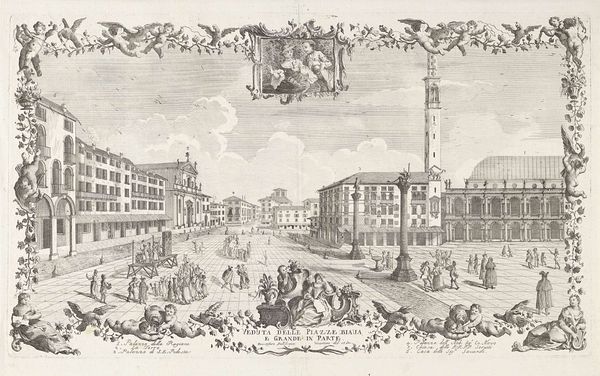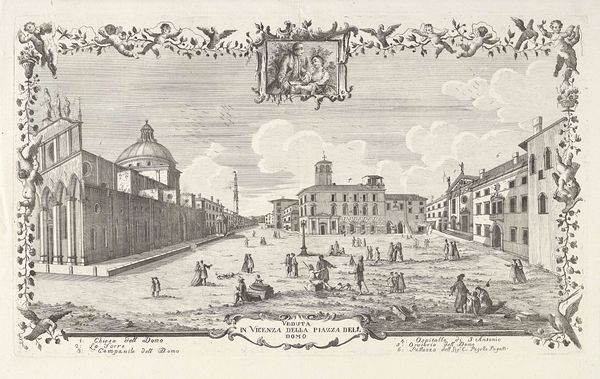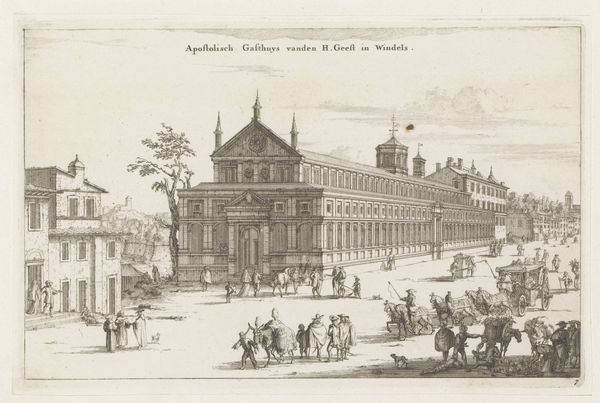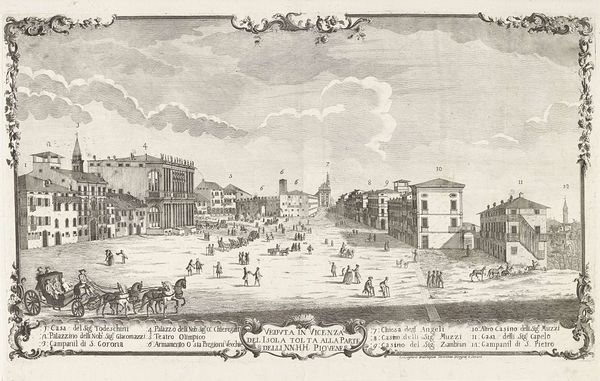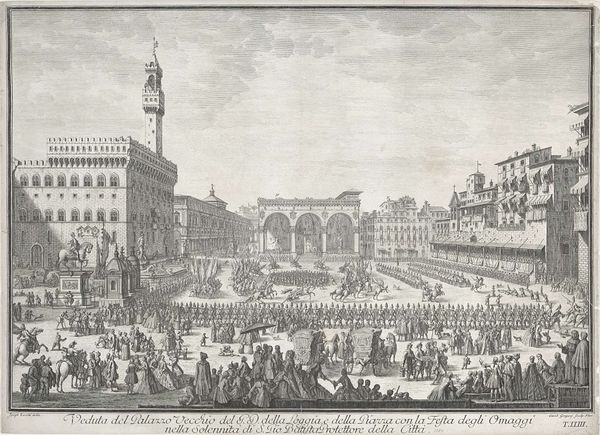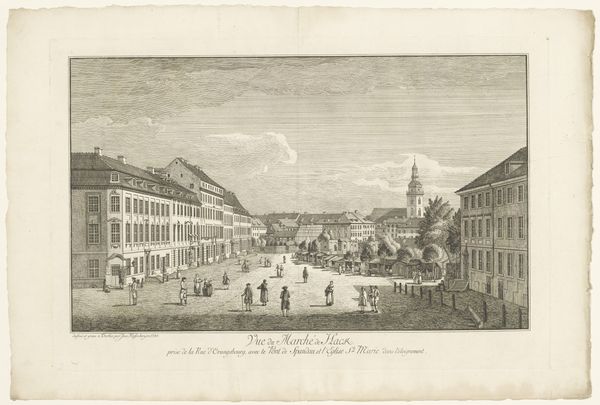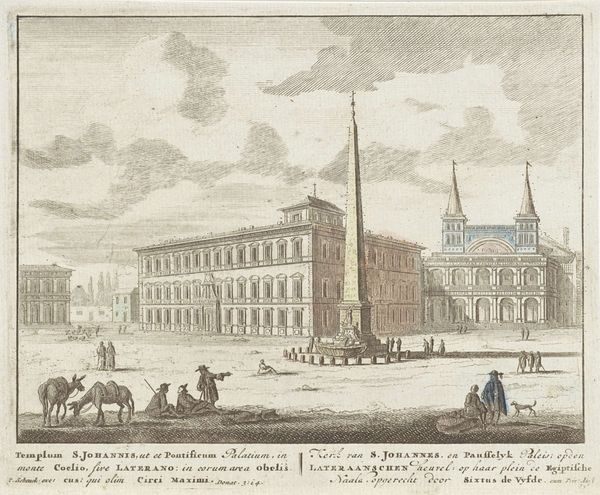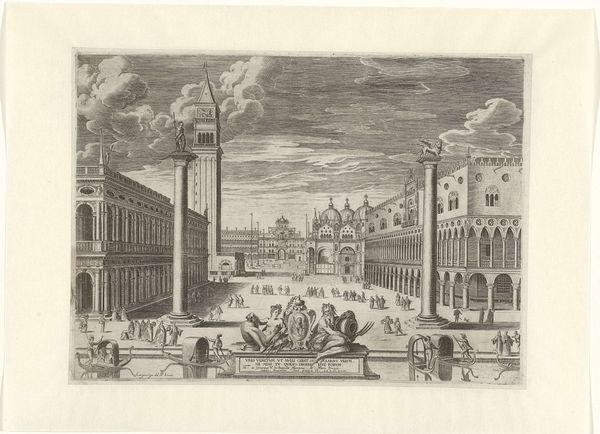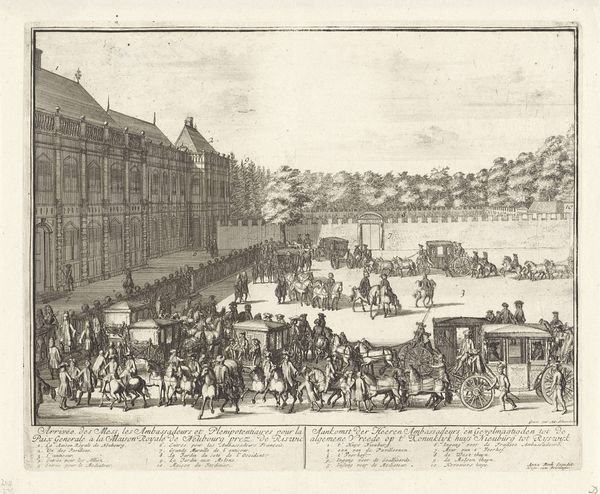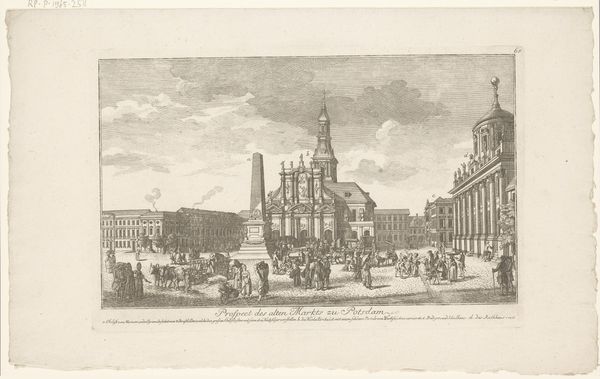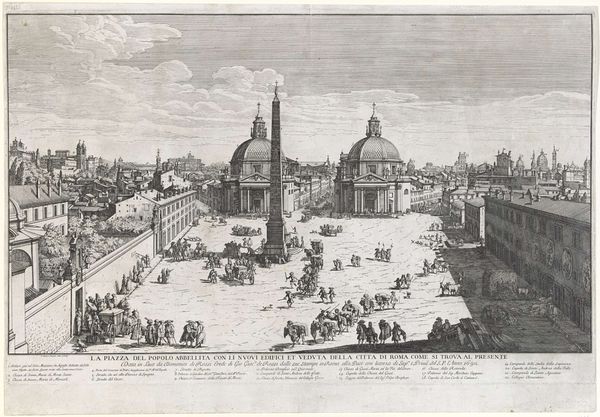
Dimensions: height 385 mm, width 630 mm
Copyright: Rijks Museum: Open Domain
Editor: This is Cristoforo dall' Acqua's "Piazza Grande in Vicenza," created between 1744 and 1787, using ink and engraving. The perspective is really striking, it feels like you could walk right into the city. How do you interpret this work? Curator: The image resonates with symbolic meaning on several layers. Consider, for example, the clarity and precision of the lines. What do they evoke in your mind? Editor: I guess they emphasize order, a planned space, but almost to an exaggerated degree. It's like a stage. Curator: Exactly. Dall' Acqua isn't just showing us the physical space; he's presenting an idealized vision of Vicenza. Look closely at the figures populating the piazza. How would you describe them? Editor: Well, they look like they are performing… there’s a theatricality about them and the composition. They don’t seem to interact much, each caught in their own little bubble. Curator: Precisely. These aren't candid snapshots but carefully arranged elements. This depiction isn’t only about spatial accuracy; it's a representation of social harmony and civic pride, conforming to Baroque ideals of order and decorum. Even the clouds are tamed! The image functions as a cultural artifact, encoding the values and aspirations of its time. What does thinking about symbolism do for our understanding of this piece? Editor: I realize the scene isn't just a pretty picture, but a carefully constructed message about Vicenza and its place in the world, or at least, how they wanted it to be seen. Curator: Precisely. The symbols and idealized composition invite the viewer to reflect upon the meanings of urbanity and power. Editor: That gives me a totally different way to see the image; it is so much more than just lines on paper.
Comments
No comments
Be the first to comment and join the conversation on the ultimate creative platform.
